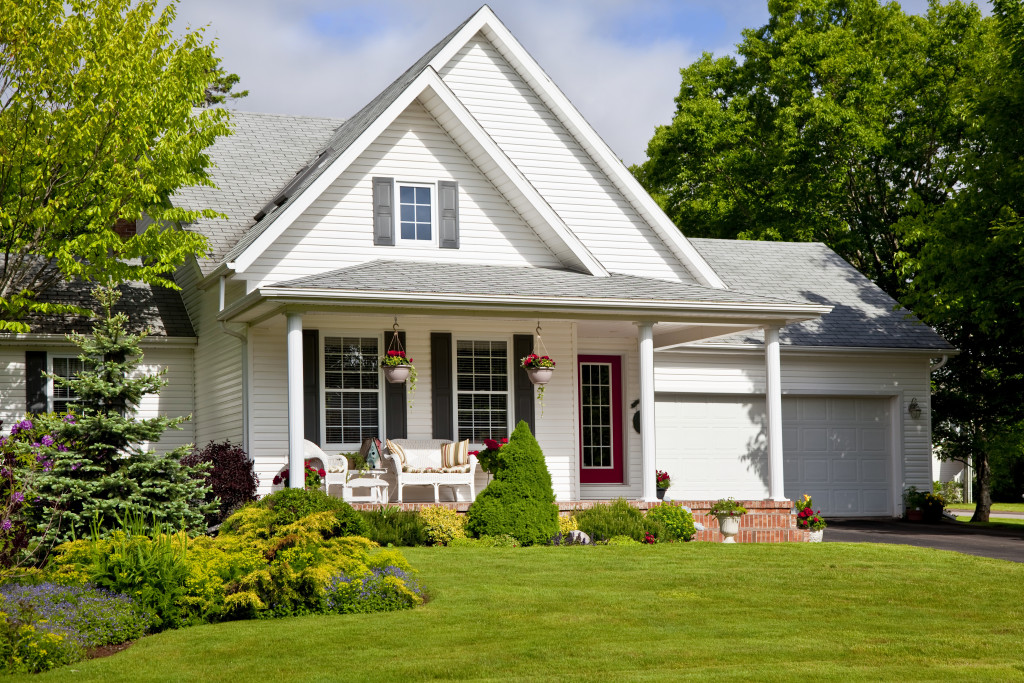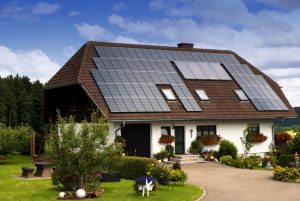- Understand your space and needs before starting the landscape design process.
- Introduce layers and textures using plants of varying heights, various textures, and colors that create contrast and harmony.
- Incorporate water elements like fountains or ponds to add interest to your outdoor space.
- Add lighting for ambiance as well to ensure safety.
- Natural stone features like boulder retaining walls and pathways can bring a rugged elegance to your landscape design.
The design of your home’s landscape is not just about aesthetics. It plays a significant role in defining your property’s ambiance, functionality, and value. A thoughtfully designed landscape can transform a simple house into a breathtaking masterpiece. If you want to revamp your outdoor space and elevate its appeal, follow these transformative tips tailored to ensure your home stands out.
1. Understand Your Space and Needs
Start by assessing the current state of your landscape. How does it feel when you step outside? What do you wish was different? It’s essential to recognize the strengths and limitations of your outdoor space. Knowing the specifics will help you make the most of what you have, whether it’s a sprawling lawn or a compact backyard.
Next, think about your needs and lifestyle. Do you envision hosting backyard barbecues, or do you want a serene space to meditate and relax? Your landscape design should align with your preferences and desired functionality.
2. Introduce Layers and Textures
Landscape design layering refers to strategically placing plants of varying heights and sizes. This creates depth and visual interest.
Here are some tips to introduce layers and textures:
Select Plants with Different Heights
When it comes to layering, choosing plants of varying heights is crucial. Tall trees form the backdrop, medium-sized shrubs fill the middle ground, and low-growing plants create the front layer. This height difference brings depth to the landscape, enabling each plant to stand out without overshadowing others. In this way, a three-dimensional effect is achieved that can make your garden look larger and more dynamic.
Use a Variety of Textures
The use of various textures can enhance the visual complexity of your landscape. Mixing plants with different leaf forms, such as broad, needle-like, or feathery leaves, can create a visually appealing contrast. Similarly, incorporating plants with distinct bark textures, from smooth to peeling or rough, can add another layer of interest to your garden.
Consider Color in Your Layering
Color is a powerful tool in landscape design. When executed right, color can create a sense of harmony and rhythm. Use contrasting colors to create focus points, while complementary colors can evoke tranquility. Remember, the consideration of color should not just be limited to the plants’ flowers but also their leaves, stems, and fruits.
Balance in Layering and Texturing
While layering and texturing add interest to your landscape, maintaining balance is crucial. Too many different plants can make your garden look cluttered. Try to find a balance between variety and unity. Group similar plants and repeat the same plants or colors in different garden parts for a cohesive look.
3. Incorporate Water Elements

Nothing elevates a landscape like the soothing sound of flowing water. Whether it’s a majestic fountain, a serene pond, or a minimalist water feature, the inclusion of water can transform the ambiance of your outdoor space. It not only becomes a focal point but also promotes tranquility and relaxation.
Maintaining your water feature is crucial. Ensure regular cleaning and check for any leakages. If you introduce fish or other aquatic creatures, ensure they have a conducive environment to thrive.
4. Light Up Your Landscape
Effective lighting can make your landscape come alive during the evening hours. Strategically placed lights can accentuate the architectural features of your home, highlight specific plants, or create a cozy ambiance for evening gatherings. Solar lights are an eco-friendly option that can be effortlessly integrated without complex wiring.
Apart from aesthetics, lighting also serves a practical purpose. Well-lit pathways and entrance areas enhance safety, ensuring that you and your guests can easily navigate the property during nighttime.
5. Integrate Natural Stone Features

Natural stone elements can drastically enhance the look and structure of your landscape. Incorporating a high-quality boulder retaining wall ensures a visually striking and functional landscape design. These walls, constructed using large rocks or boulders, hold back soil, prevent erosion, and create flat terraces in sloped areas.
Besides their utility, boulder retaining walls add a rugged elegance to your landscape. They blend seamlessly with the natural environment and require minimal maintenance. Other stone features you could add include pathways, patios, fire pits, walkways, and more.
In Summary
Transforming your home’s landscape design involves creativity, innovation, and thoughtful planning. From understanding your space to integrating stunning features like boulder retaining walls, each step brings you closer to achieving an outdoor oasis that resonates with your vision. Remember, the landscape is an extension of your home, and with the right design, it can become your favorite ‘room’ to relax, entertain, and make lasting memories.






